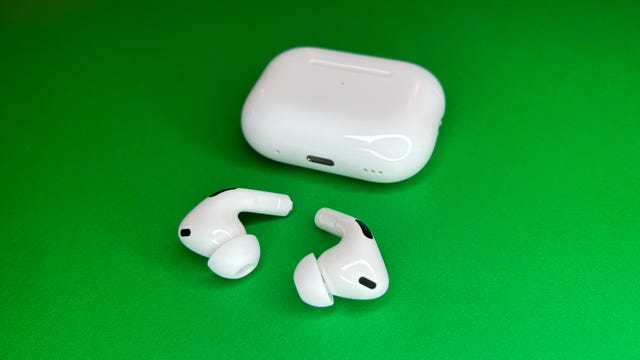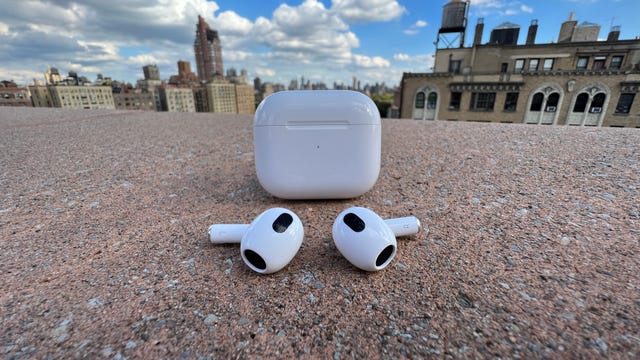Technologies
Apple AirPods Pro 2 vs. AirPods 3: The Biggest Differences
Active noise cancellation is the biggest benefit you’ll get from buying the AirPods Pro 2 over the AirPods 3.
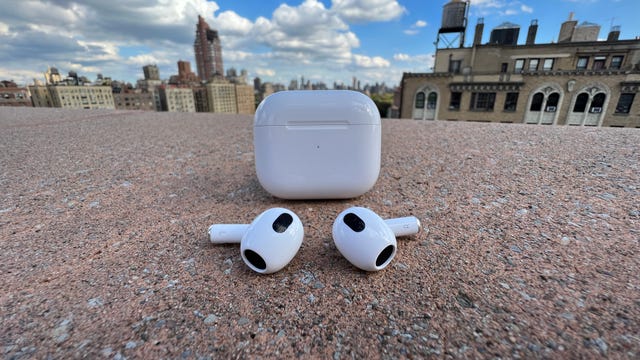
If you’re trying to decide between Apple’s AirPods 3 and its AirPods Pro 2, the biggest questions are whether you want active noise cancellation in a noise-isolating design or open earbuds that don’t require you to jam silicone ear tips into your ears. Yes, there’s a price difference — the AirPods Pro 2 sell for about $200 online while the AirPods 3 cost about $150. But with only about $50 separating the two AirPods models, it’s probably more important to focus on those key differences rather than dwelling too much on their price.
Apple has bridged the gap between its Pro and regular AirPods by upgrading the AirPods 3’s design — it now looks more like the Pro’s design minus the silicone ear tips — and giving it the same IPX4 splash-proof water resistance rating. Additionally, the AirPods 3, like the AirPods Pro and Pro 2, also have Apple’s spatial audio with head-tracking feature.
Read more: Best Wireless Earbuds for 2023
But there are still certain benefits you can only get on the $249 AirPods Pro 2, the biggest being active noise cancellation and transparency mode. Multiple ear tip sizes, the ability to swipe up and down to control music volume and ultra wideband support are also exclusive to the Pro 2. But noise cancellation will likely make the biggest impact in everyday use, and it’s the most important factor to consider.
AirPods Pro 2 vs. AirPods 3
| AirPods Pro 2 | AirPods 3 | |
|---|---|---|
| Price (USD) | $249 | $169 (Lightning case) |
| Price (UK) | £249 | £179 (Lightning case) |
| Price (AU) | AU$399 | AU$279 (Lightning case) |
| Weight (earbuds) | 0.19 ounce | 0.15 ounce |
| Audio features | Active noise cancellation, Adaptive transparency, spatial audio with dynamic head tracking | Spatial audio with dynamic head tracking |
| Audio technology | Adaptive EQ, custom high-excursion Apple driver, custom high dynamic range amplifier, vent system for pressure equalization | Adaptive EQ, custom high-excursion Apple driver, custom high dynamic range amplifier |
| Durability | IPX4 sweat and water resistant | IPX4 sweat and water resistant |
| Charging | MagSafe or Lightning | MagSafe or Lightning (extra $10 for MagSafe case) |
| Multiple ear tips | Yes | No |
| Chip | H2 chip, U1 chip in charging case | H1 chip |
| Battery life (earbuds) | 6 hours of listening time | 6 hours of listening time |
| Battery life (case) | 30 hours of listening time | 30 hours of listening time |
| Microphones | Dual beamforming microphones; inward-facing microphone | Dual beamforming microphones; inward-facing microphone |
| Sensors | Skin detect sensor, motion detecting accelerometer, speech detecting accelerometer, touch control | Skin detect sensor, motion detecting accelerometer, speech detecting accelerometer, Force sensor |
| Controls | Hey Siri, touch controls | Hey Siri, Force sensor |
AirPods Pro 2 vs. AirPods 3: Design and case
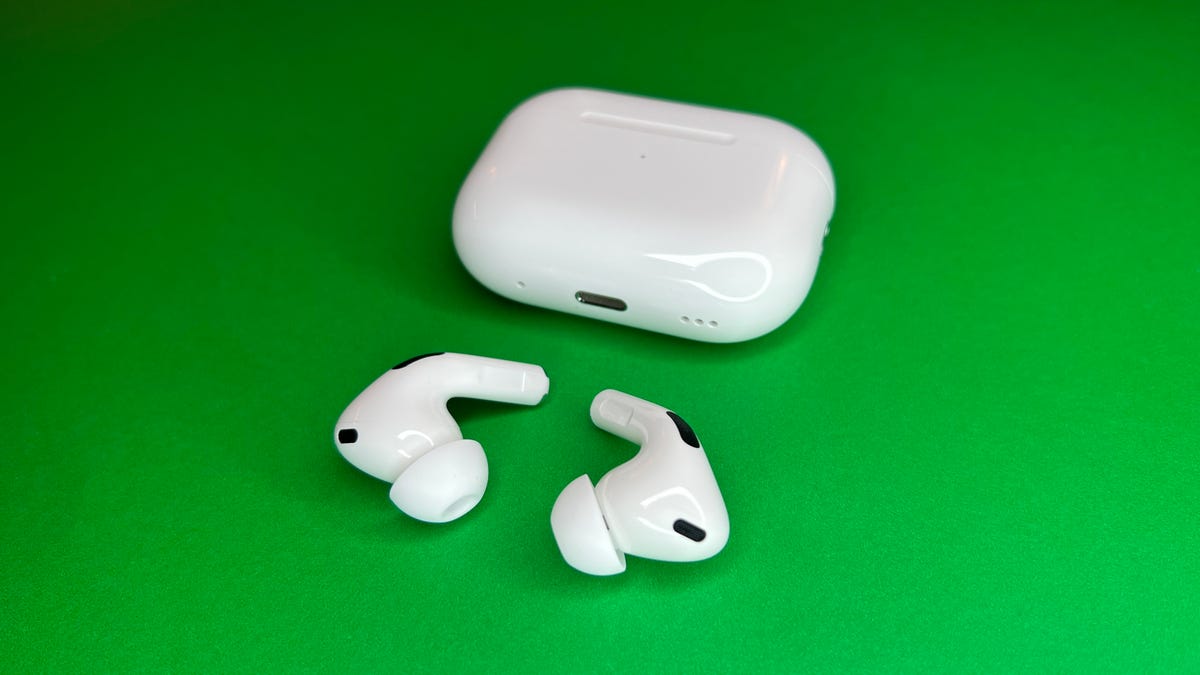
The AirPods Pro 2.
The biggest difference in terms of design is that the $169 AirPods don’t have interchangeable silicone tips like the AirPods Pro 2, which include four sizes to choose from. The AirPods 3 are also lighter than the AirPods Pro 2 at 0.15 ounce (4.3 grams) versus 0.19 ounce (5.3 grams).
The AirPods 3 and new AirPods Pro share some similarities when it comes to design, although it’s very easy to tell them apart. The AirPods Pro 2’s stems, for example, are noticeably shorter than those on the AirPods 3. But both models are sweat and water resistant, which could make them more appealing than the $129 regular AirPods for those who want to wear them during exercise.
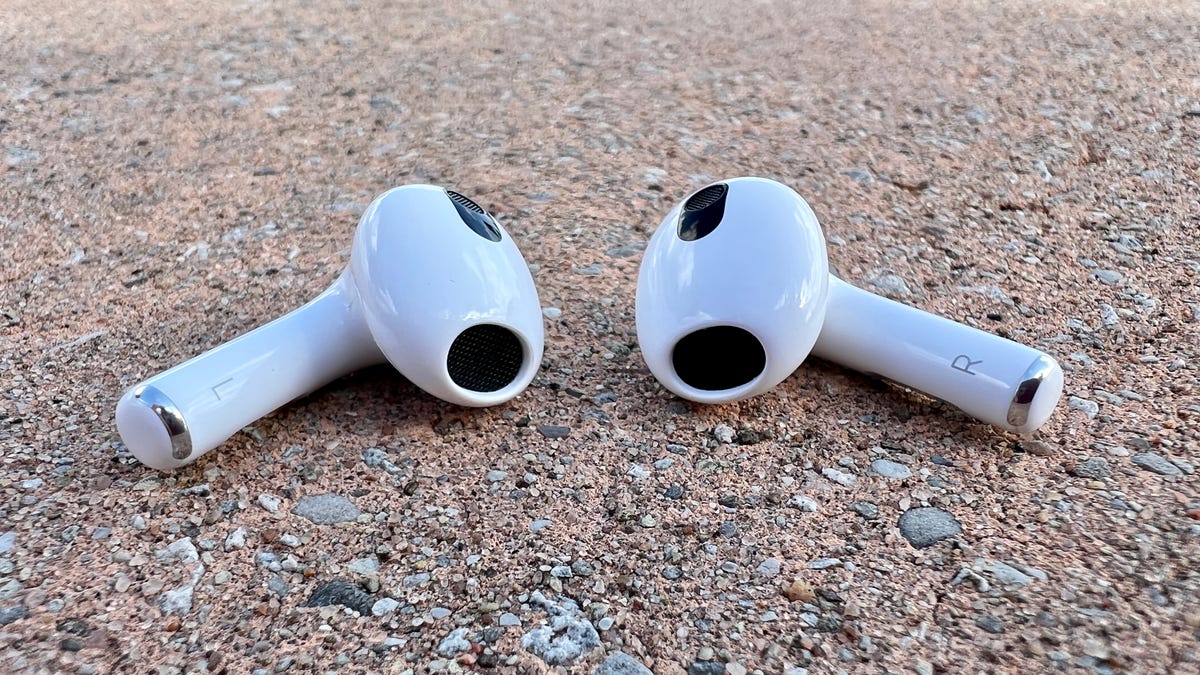
The third-generation AirPods.
The case for the AirPods 3 sort of looks like a cross between the case for the standard AirPods and that of the AirPods Pro. It’s much shorter and wider than the entry-level AirPods case, but it’s not as wide as the holster for the AirPods Pro. You can also charge the case for the AirPods 3 or the AirPods Pro via Apple’s wireless MagSafe charger, or by plugging it in with a Lightning cable. But you’ll have to pay an extra $10 to get the MagSafe wireless charging case bundled with the AirPods 3. The MagSafe-compatible case for the AirPods Pro 2 also has a lanyard loop, unlike the AirPods 3’s case.
The second-generation AirPods Pro’s case also has another capability: ultra wideband support. That essentially means the case has a built-in AirTag for easier location tracking.
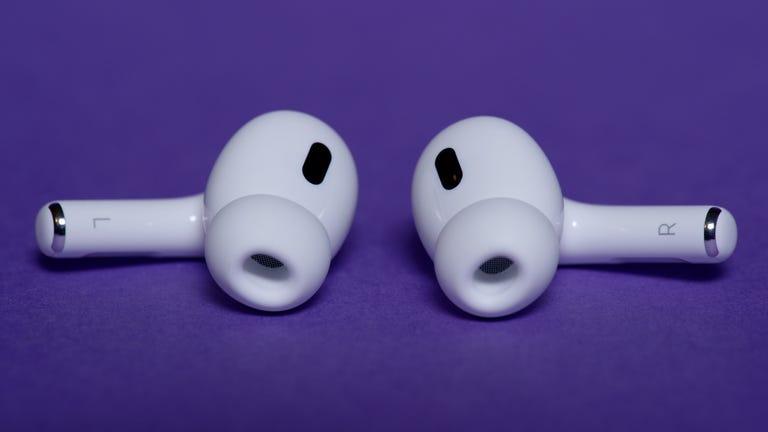
10:21
AirPods Pro 2 vs. AirPods 3: Audio
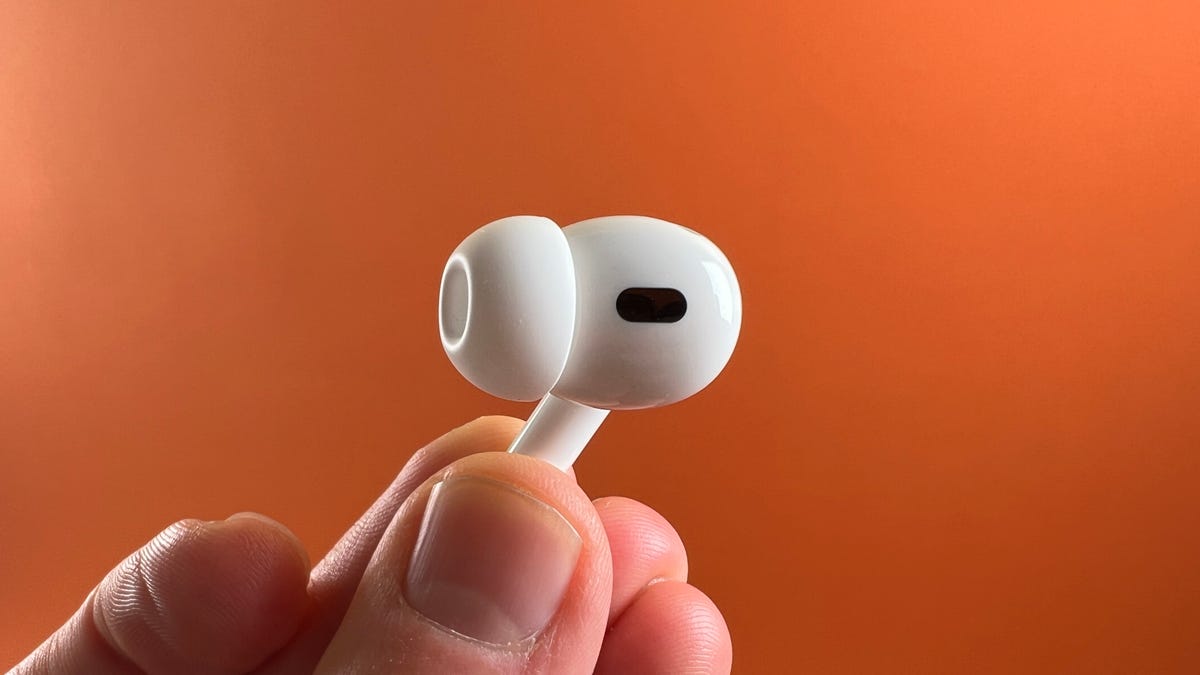
The AirPods Pro 2 have active noise cancellation and transparency mode.
You’ll still have to splurge on Apple’s top-of-the-line earbuds to get active noise cancellation and transparency mode. Since the second-generation AirPods Pro have Apple’s new H2 chip, they can cancel up to twice as much noise as the previous AirPods Pro, according to Apple’s claims. Transparency Mode has also gotten an upgrade on the second-generation model. The new chip can reduce loud noises from your surroundings when in Transparency Mode, which should make sounds like a passing vehicle seem less jarring.
That new H2 chip also brings improved audio to the AirPods Pro 2, further distinguishing them from the AirPods 3. As my colleague David Carnoy wrote in his review, the H2’s computational power helps the AirPods Pro process a broader range of frequencies.
You’ll also get swipe controls for managing volume levels on the AirPods Pro 2. The AirPods 3 just have Apple’s force sensors, which you can press to skip ahead, pause music or answer calls.
But both the AirPods Pro 2 and AirPods 3 have dynamic spatial audio and adaptive EQ. The former is essentially virtual surround sound, while the latter adjusts the sound to your ears.
AirPods Pro 2 vs. AirPods 3: Battery life
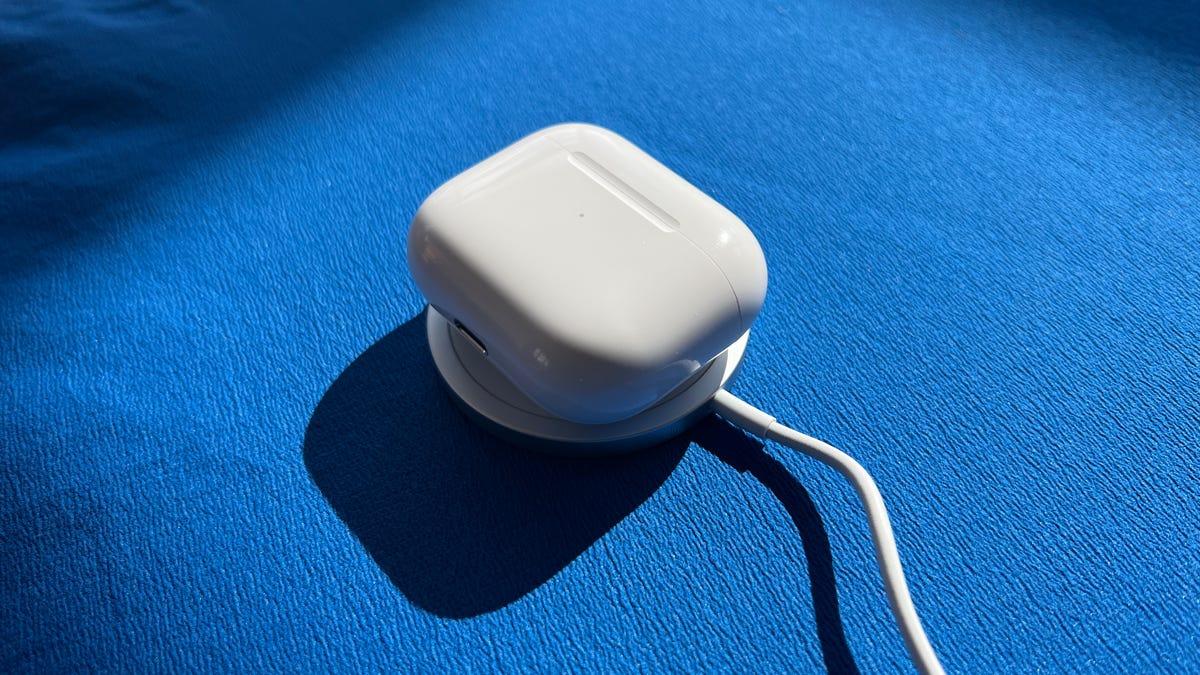
The AirPods 3 (pictured) and AirPods Pro 2 offer similar battery life.
Battery life is similar for both models, although there are some slight differences. Both earbuds should provide up to 6 hours of listening time, according to Apple’s claims. But you’ll get 5.5 hours of battery life when using spatial audio and head tracking on the AirPods Pro 2, while the AirPods 3 offer slightly shorter 5-hour battery life with that surround sound feature enabled. Apple also claims the AirPods Pro 2 provides 4.5 hours of talk time, while the AirPods 3 offer up to 4 hours.
The case for both earbuds should provide up to 30 hours of listening time, says Apple. But when it comes to talk time, you can expect to get 24 hours from the AirPods Pro 2’s case and 20 hours from the AirPods 3’s case. Five minutes in each case is expected to replenish around one hour of listening time or roughly 1 hour of talk time.
AirPods Pro 2 vs. AirPods 3: How to choose
The AirPods Pro 2 are for those who want active noise cancellation, better audio and a more customizable fit. You’ll also get some other perks, like the ability to track them down more easily should they get lost, thanks to the U1 chip. The AirPods 3 are a more suitable choice if you don’t care about noise cancellation and prefer earbuds with an open design (and yes, they cost about $50 less, so they do offer some appeal to those on tighter budgets). At the same time, the AirPods 3 still have more to offer than the AirPods 2, which lack features like water resistance, adaptive EQ and spatial audio with head-tracking.
The new AirPods Pro (2nd generation) are powered by Apple’s new H2 chip, which delivers more processing power while being more energy efficient, according to Apple. The new chip, combined with new low-distortion drivers, allows for improved sound that offers better clarity and depth. The noise canceling is also improved — Apple says the new AirPods have «double» the noise canceling of the original AirPods Pro. Additionally, the new AirPods add an extra hour of battery life, up from five to six hours with noise canceling on. Plus, a speaker in the case that emits a sound that helps locate your buds via Find My should they decide to hide from you.
Note that while Apple has discontinued the , they’ll remain on sale until supplies are exhausted. However, most people should get this newer model if they can afford it. The AirPods Pro 2 continue to see small discounts, dipping to as low as $223 during Amazon’ Early Access Prime event in October.
Take one look at the new design of the third-gen AirPods, and the first thing you’ll probably think is: «Those look like the AirPods Pro without ear tips.» You wouldn’t be wrong. While they’re more fraternal than identical twins, the AirPods 3 are shaped like the AirPods Pro, with the same shorter stems and same pinch controls as those of the Pro. Aside from the design change, which should fit most ears better than the AirPods 2nd Generation (though not very small ears), the biggest change is to the sound quality: It’s much improved. Also, battery life is better, and the AirPods 3 are officially water-resistant.
More headphone recommendations
- Best True Wireless Earbuds for 2023
- Best Back-to-School Headphones for 2023
- Best Noise-Canceling True Wireless Earbuds for 2023
- Best Wireless Earphones and Wireless Headphones for Making Calls
- Best Headphones for 2023
- Best Cheap Wireless Noise-Canceling Headphones Under $100
- Best Headphones for Running in 2023
- Best Over-Ear Headphones for 2023
- Best Cheap Earbuds and Headphones
- Best Sony Headphones for 2023
- Best Apple AirPods Max Alternatives for Less: Sony, Bose, AirPods Pro and More
Technologies
Yes, This Swimming RoboTurtle Is Adorable. It Also Has an Important Environmental Mission
Beatbot is best known for making pool-cleaning robots, but it was its swimming robot turtle that won our hearts at CES 2026.
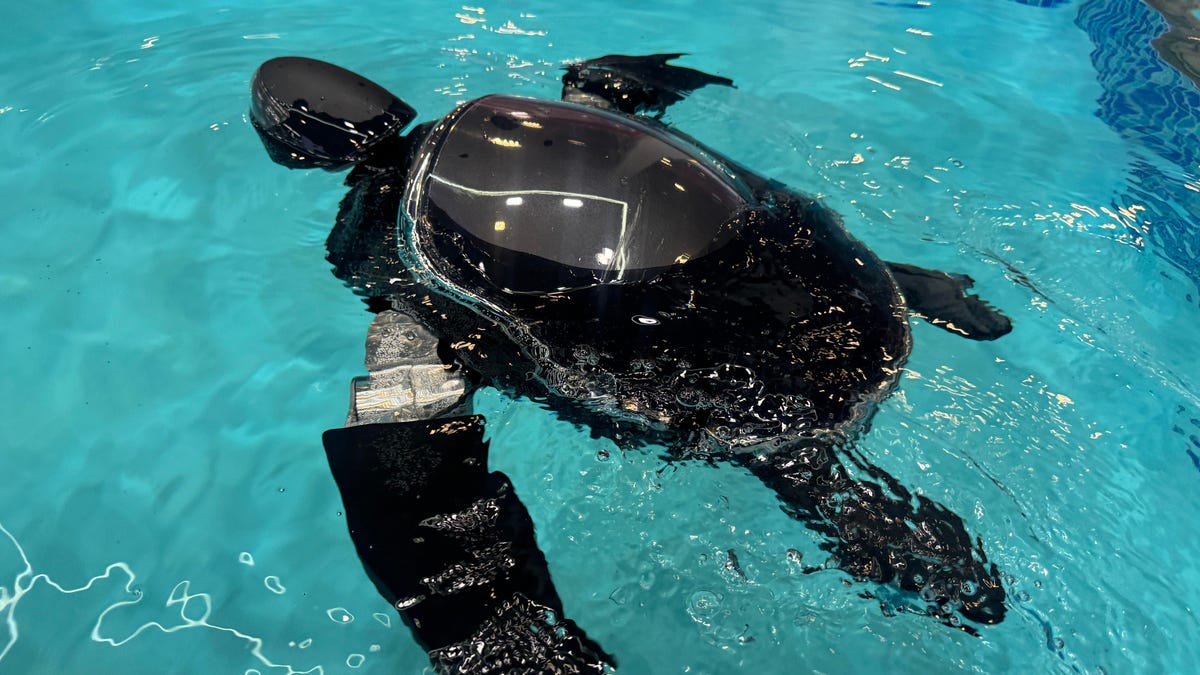
Few things in life have made me feel more privileged and awestruck than the opportunity to swim with sea turtles in their natural environment. The way in which these gentle creatures navigate through their underwater world with their deliberate and careful fin strokes is utterly mesmerizing to watch.
It’s a distinctive style of movement — so much so that when I saw Beatbot’s RoboTurtle swim across a water tank on the show floor at CES 2026, I knew that this wasn’t simply just a pool cleaner robot with turtle features tacked on. This was a studied example of biomimicry in action.
The reason for this is that the company’s engineers went on a two-month expedition to study sea turtles in their natural environment, Beatbot’s Eduardo Campo told me as we watched Turtini (the team’s affectionate nickname for RoboTurtle) splash around in its pool. «We did a lot of motion capture, like the things they use in movies, because we need to develop those joints that it has,» he said.
This isn’t RoboTurtle’s first time at CES — it also appeared in 2025 as a static concept. This is the year, however, it’s found its fins, so to speak. Not only can it swim, but it can also respond to hand gestures: I throw it an OK gesture, and it dances in response. But as cute and limber as it is, RoboTurtle is a robot with an important mission.
RoboTurtle is an environmental research tool, built with input from researchers and NGOs, which can go where humans or other machines cannot for fear of disturbing complex and delicate underwater ecosystems, particularly coral reefs. It can move silently and naturally in a way that won’t scare wildlife, monitoring water quality and fish numbers with its built-in camera.
«One of the groups that we’re working with, they want to study the coral reefs in near Indonesia,» said Campo. «There was a very big incident over there with a boat that came up onto a coral reef and it disrupted the environment, [so] they want the least intrusive robot possible.»
The group wants to deploy RoboTurtle for certain periods every year to monitor the recovery of the coral and monitor the fish population, he added. Beatbot is currently training the built-in AI to give RoboTurtle monitoring and recognition skills.
At CES, I watched RoboTurtle paddle about only on the surface of the pool, but it can also dive down up to five meters. However, it needs to resurface to send data and its GPS signal back to base, much like a real turtle that needs to come to the surface to breathe. This also gives it a chance to recharge via the solar panel on its back.
Even though I was impressed with RoboTurtle’s swimming ability, Campo estimates that the Beatbot team is still a year and a half away from perfecting its technique, with the robot ready for full deployment in between three to five years.
CES 2026 is a show where tech with a real purpose feels scarce, so it sure is refreshing to see a company use its expertise to build something designed with a sustainable future in mind. It might be a while until we see RoboTurtle take to the seas, but I’m glad that I got to witness it at this stage of its journey.
Technologies
These Tiny Robots Are Smaller Than Grains of Salt and Can Think, Move and Swim
Despite their size, the robots can navigate liquids, respond to their environment and operate without external control.
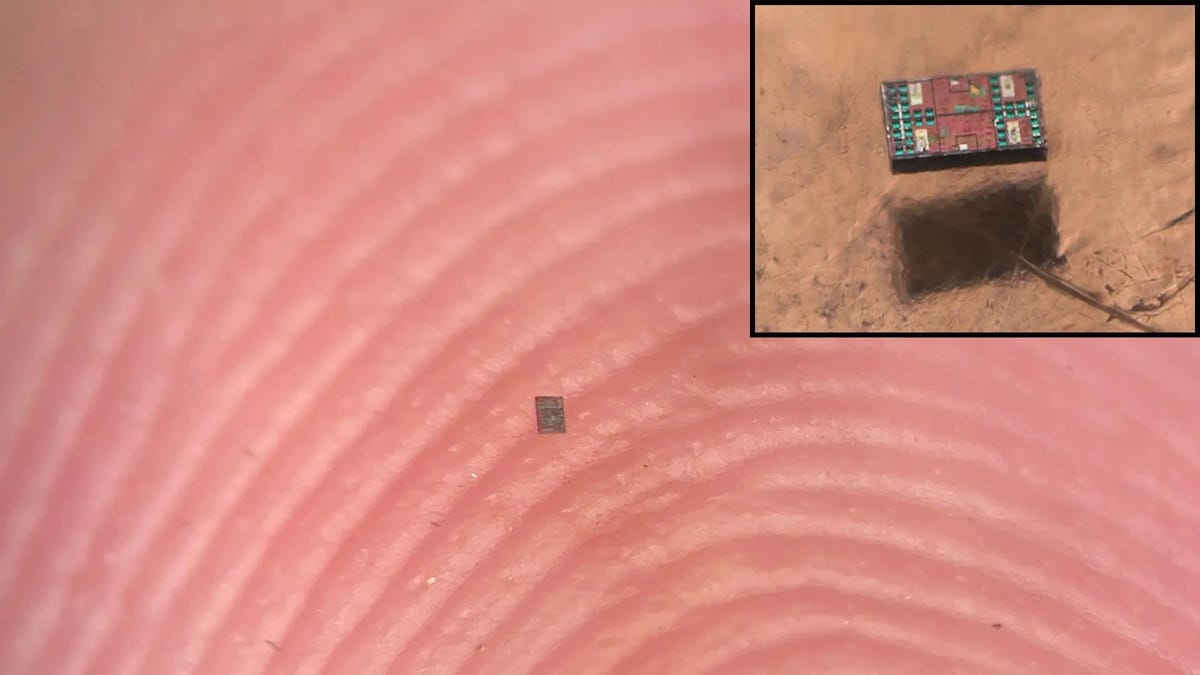
Robots smaller than a grain of salt? It sounds like science fiction, but researchers have developed autonomous microrobots that can move through liquids, sense their environment and operate independently using only light as a power source.
The microrobots, developed by researchers at the University of Pennsylvania and the University of Michigan, measure roughly 200 by 300 by 50 micrometers. Yet they can detect temperature changes, follow programmed paths and function independently for months at a time.
Their work was reported this week in two scientific journals, Science Robotics and Proceedings of the National Academy of Sciences.
Don’t miss any of our unbiased tech content and lab-based reviews. Add CNET as a preferred Google source.
«We’ve made autonomous robots 10,000 times smaller,» senior author Marc Miskin, assistant professor in electrical and systems engineering at Penn Engineering, said in a statement. «That opens up an entirely new scale for programmable robots.»
Powered entirely by light, the robots don’t move using mechanical limbs. Instead, they generate tiny electrical fields that push ions (electrically charged particles) in fluid to create motion, an approach better suited to the unique physics of the microscopic world, where traditional motors don’t work.
Unlike earlier microrobots, these devices combine sensing, computing, decision-making and movement in a single, self-contained system at an extremely small scale.
Previous efforts in microrobotics have often relied on external controls, such as magnetic fields or physical tethers, to guide movement. These new microrobots, however, incorporate their own miniature solar cell-powered processors, allowing them to respond to their environment, communicate through patterned movements visible under a microscope and carry out tasks without outside direction.
Potential applications include monitoring biological processes at the cellular level, supporting medical diagnostics or helping assemble tiny devices. Because each robot can be mass-produced at very low cost, the technology opens new avenues for research and engineering at scales that were previously unreachable.
Technologies
Today’s NYT Mini Crossword Answers for Wednesday, Jan. 7
Here are the answers for The New York Times Mini Crossword for Jan. 7.
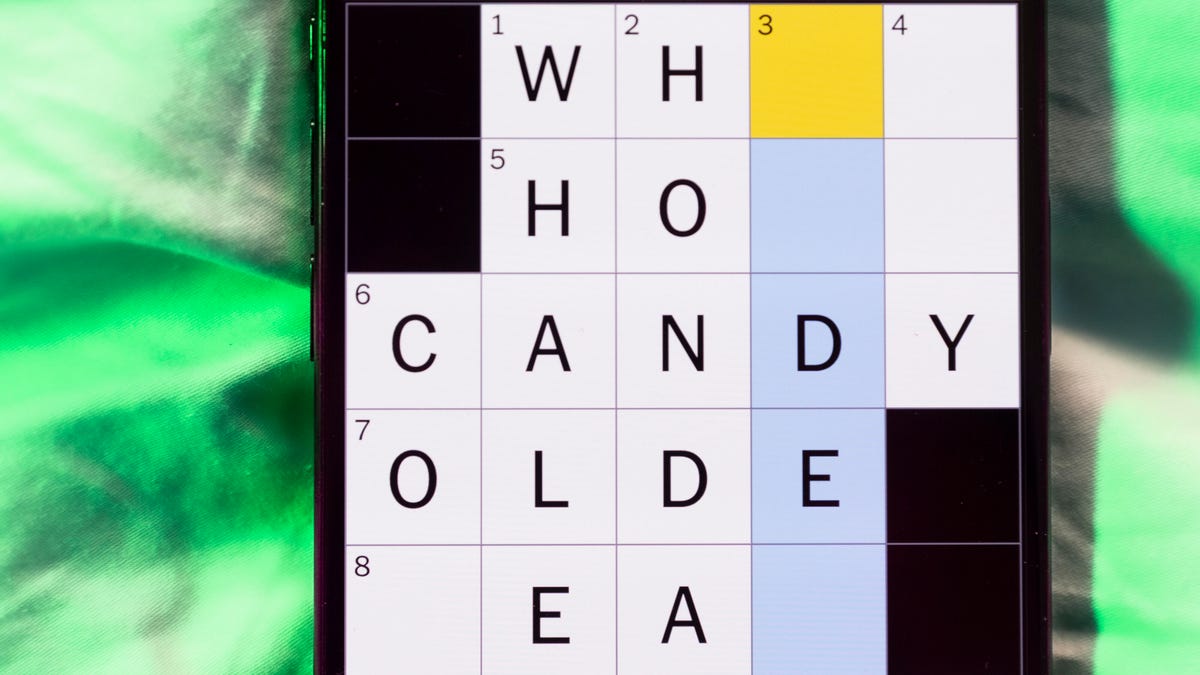
Looking for the most recent Mini Crossword answer? Click here for today’s Mini Crossword hints, as well as our daily answers and hints for The New York Times Wordle, Strands, Connections and Connections: Sports Edition puzzles.
Need some help with today’s Mini Crossword? I thought today’s was a tough one — I couldn’t solve too many of the Across clues and had to move on to the Down clues to fill in the answers. Also … look at the answer for 3-Down! Are we using Gen Z slang now as if everyone knows it? Anyway, if you want all the answers, read on. And if you could use some hints and guidance for daily solving, check out our Mini Crossword tips.
If you’re looking for today’s Wordle, Connections, Connections: Sports Edition and Strands answers, you can visit CNET’s NYT puzzle hints page.
Read more: Tips and Tricks for Solving The New York Times Mini Crossword
Let’s get to those Mini Crossword clues and answers.
Mini across clues and answers
1A clue: Planning to, informally
Answer: GONNA
6A clue: ___ tolls (GPS setting)
Answer: AVOID
7A clue: Pulsed quickly, as the heart
Answer: RACED
8A clue: Draw an outline of
Answer: TRACE
9A clue: Prefix with loop for theoretical high-speed transport
Answer: HYPER
Mini down clues and answers
1D clue: Wayne’s sidekick in «Wayne’s World»
Answer: GARTH
2D clue: Egg-producing organ
Answer: OVARY
3D clue: «I’m serious!,» in slang
Answer: NOCAP
4D clue: Sister’s daughter
Answer: NIECE
5D clue: Snake that sounds like it would be good at math?
Answer: ADDER
Don’t miss any of our unbiased tech content and lab-based reviews. Add CNET as a preferred Google source.
-

 Technologies3 года ago
Technologies3 года agoTech Companies Need to Be Held Accountable for Security, Experts Say
-

 Technologies3 года ago
Technologies3 года agoBest Handheld Game Console in 2023
-

 Technologies3 года ago
Technologies3 года agoTighten Up Your VR Game With the Best Head Straps for Quest 2
-

 Technologies4 года ago
Technologies4 года agoBlack Friday 2021: The best deals on TVs, headphones, kitchenware, and more
-

 Technologies4 года ago
Technologies4 года agoVerum, Wickr and Threema: next generation secured messengers
-

 Technologies4 года ago
Technologies4 года agoGoogle to require vaccinations as Silicon Valley rethinks return-to-office policies
-

 Technologies4 года ago
Technologies4 года agoOlivia Harlan Dekker for Verum Messenger
-

 Technologies4 года ago
Technologies4 года agoiPhone 13 event: How to watch Apple’s big announcement tomorrow

